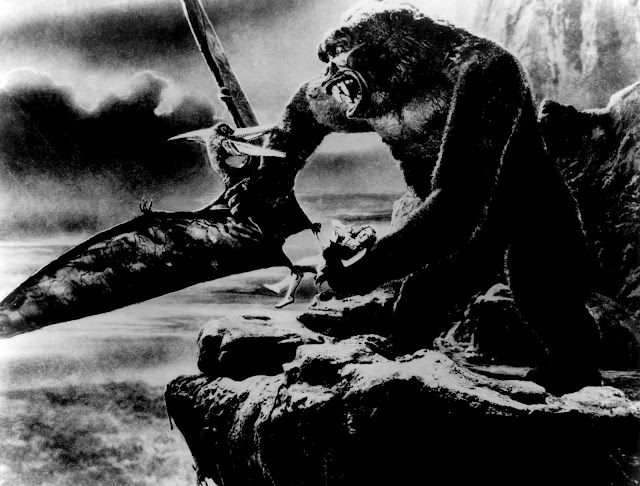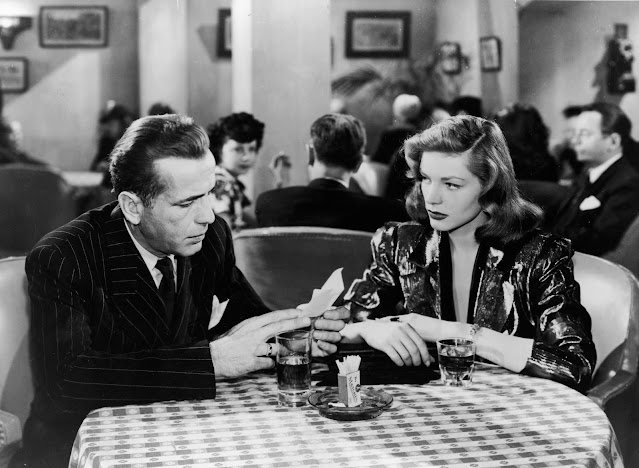Teinosuke Kinugasa's "Gate of Hell"
In the 1920s, Teinosuke Kinugasa was not renowned in Japan. He had made some small avant-garde films like "A Page of Madness" and "Crossroads," which were not heavily considered films at the time. Because of this frustration, Kinugasa took "Crossroads" to the Soviet Union, where he met renowned filmmakers Sergei Eisenstein and Vsevolod Pudovkin. Despite the film gaining some recognition for its creativity in the Soviet Union and the rest of Europe, it did not gain that much traction. Because of this, Kinugasa was forced to retreat back to Japan where his failures forced him to close his film company. For the rest of his career, Kinugasa made the more commercially viable jidaigeki, or 'period drama,' films. After Japan was defeated in the second World War, an explosion of artistic expression sent Japan into its greatest critical period in the nation's history. Filmmakers such as Akira Kurosawa, Kenji Mizoguchi, and Yasujiro Ozu were making internationally acclaimed works of art. Now with national attention on Japanese cinema, Kinugasa constructed the most acclaimed film of his career, "Gate of Hell." However, like with his films before, it was not critically celebrated in Japan. Despite this, the film garnished international praise. It won the Grand Prix at the 1954 Cannes Film Festival in France as well as two Academy Awards in the United States, for Best Foreign Language Film and Best Costume Design, Color. Once again, Kinugasa found international recognition despite his lack of interest in his homeland. This presents a great irony, as "Gate of Hell" demonstrates the very essence of Japanese culture, honor, and politics.
The film begins with a state of chaos. In January of AD 1160, Lord Kiyomori, who established Japan's first samurai-dominated administration, left his palace on a family holiday. In his absence, two generals and their armies lay siege to the palace hoping to overthrow the government. To get the princess out safely, they have a lady-in-waiting named Kesa be a decoy for the princess to confuse the invaders. Morito, a loyal samurai, is tasked with escorting her. After an attack by enemy forces, Morito takes Kesa to his brother's estate where she will be safe. After learning that his brother has joined enemy forces, Morito is forced to oppose his own family to maintain his loyalty to Lord Kiyomori. After the coup d'etat is squashed, everything is in order once again. Morito decides that he wants to marry Kesa, whom he protected during the conflict. He asks Lord Kiyomori to arrange this marriage. He then learns that Kesa is married to a noble samurai named Wataru. However, this news does not deter Morito as he resorts to more disturbing strategies to win her over. He becomes less and less dignified in his behavior, acting out and being openly aggressive. He then resorts to stalking and threats of violence. He tells Kesa that if she does not comply, he will murder her entire family, along with her. She complies with his demands and allows him to sneak into their home to kill her husband. However, when Morito stabs his blade into the figure of her husband's bed, he discovers that Kesa has sacrificed herself in her husband's place. Feeling ashamed, Morito confesses his sin to Watau, asking him to kill him. Wataru denies this request, not allowing him any chance of forgiveness or honor. Morito then cuts off his hair and resides himself to living his life with his shame. The two remain in each other's presence in the moonlight, as the film ends in a state of quiet order.
One of the most apparent themes of the film is the thin line between order and disorder. The order is linked to the compliance of authority while the disorder is represented through the lack of compliance. The film begins in a state of complete disorder. While Lord Kiyomori is away, chaos reigns. This is shown through the violence and mayhem of the armed conflicts taking place. Kinugasa never shows actual blood or bodily mutilation but impresses this violence with kinetic shots and rapid edits. He films scenes of people who are visually moving across the screen in unregulated hoards. Dozens of people moving in varied directions, some fighting, some fleeting, showcase a visual expression of chaos. He even compares this to an image of scrambling chickens. After the fighting is over and the coup is suppressed, the film then takes us to states of order and dignity. Under the Lord's reign, everyone can be seen in a single file, calm and mild-mannered, with slow and steady movements. This reservation and calm presented in the film are in direct contrast with the opening sequences of violence and unrest. To further establish visual motifs, Kinugasa uses colorful silk to illustrate the variation between the two extremes. When the palace is getting ransacked, Kinugasa lingers on images of beautifully colored fabrics that have been torn and ripped apart. Throughout the rest of the film, those images linger in your mind as the characters and settings are draped in these beautiful silks. This allows the viewer to keep in mind that this calm and order constantly hold the threat of disorder and can unravel at any moment.

Kinugasa continues to show us images of visual order, whether it be through the setting or the behavior of the characters.
The only thing stopping this renewed order is Morito. His adamancy over his desire to be with Kesa, despite her being married, creates inherent conflict in the established order. Kinusaga continuously demonstrates Morito's non-adherence to order, custom, and rules by showing him visually abstracting this visual order. In the below image, Morito becomes upset and gets out of the literal line to kick over his food tray, stand out of place from the group, and challenge violence in a setting that prohibits it. Wataru works as an opposite to Morito. Wataru speaks calmly, yet firmly. He does not make excuses and speaks clearly. And yet, he is reserved. His behavior directly contrasts with that of Morito. These two opposing forces present the main point of the film, as one man quietly controls himself while another is out of control. Kesa does not bend fully to the will of the uncontrolled, however, as she is able to maintain her honor and protect her family by sacrificing herself to avoid the chaos of uncertainty and the disorder that comes with Morito.

Morito has his desires known and persists in his conquest of Kesa's lover despite her rejection, her marital status, and his own honor. Morito is quite literally upsetting the established order in order to get his own way. Kinugasa demonstrates this by posing his erratic and kinetic behavior (reminiscent of the kinetics of the opening scene) to the still and dignified body movements of those around him. This suggests themes on a societal level, as we are all warping our behavior around a set modification in accordance with certain social expectations. It also points to themes involving the dichotomy of Japanese culture itself. As "The New York Times" critic Bosley Crowther points out, "The secret, perhaps, of its rare excitement with which it blends a subterranean flood of hot emotions with the most magnificent flow of surface serenity. The tensions and agonies of violent passions are made to seethe behind a splendid silken screen of stern formality, self-discipline, and sublime esthetic harmonies. The very essence of ancient Japanese culture is rendered a tangible stimulant in the film."
The film also works on a political level. For example, Morito can represent the warrior ideals in Japanese culture. His impulses for domination and conquest over Kesa, along with his capacity for terror and violence to accomplish this domination, can represent the militarism that flooded Japan's culture and politics that plunged it into war in the 1940s. Lord Kiyomori is not without criticism from Kinugasa as well. Being the most powerful man in Japan, he is depicted as arrogant and authoritarian in nature. Not only this, he toys with Morito and Kesa, playing with their lives. Despite knowing of her marriage, he brings Kesa to the palace to talk with Morito, knowing that she will refuse. When asked about it by a servant, he laughs and acts as if he is playing games. His disregard for honor in place of his own will runs parallel to Morito's behavior. While Morito's warrior cloak hides predacious compulsion, Lord Kiyomori hides oppression and authoritarianism behind his apparent law and order. Perhaps Kinusga is saying that behind the beautiful silken robes of honor lies something animalistic and oppressive underneath.
The most abundant talking point of "Gate of Hell" is perhaps the use of color in the film. The film was the very first color film to be exported out of Japan into foreign markets. Western audiences were struck by the lavish color palette that Kinugasa employs. The stark colors in the film stem from the Eastman 5248 that Kinusaga used for production. Because this camera was a relatively slow stock, it required a lot of light to shoot with. Because of this, the images produced were fine-grained and extremely sharp. This meant that the film had a pictorialist quality to them, rather than a naturalist. Rather than looking visually like a document of reality, the lavishness and sensuality of the images emphasize the beauty of the subjects, tone, and composition. One important element to note in the color palette of the film is how it changes as the film progresses. The bright yellows and reds of early scenes subtlely transform into deep blacks and blues as the film turns more psychological. Scenes presented in daylight eventually make way for scenes set during the night. The colors of the film help utilize the dramatization of the story taking place with the expert hand of Kinugasa.
The 'Gate of Hell' referred to in the film's title is that of a physical location in the story. The Gate of Hell is the location where the characters keep returning to. It is a gate that separates the kingdom from the rural lands. It is the location where a monk's head was put for all to see to signify the coming insurrection. It is the location where Morito reunited with Kesa and established his desire to have her. It is a location that holds a painting depicting all-out chaos, in which samurai are battling and people are being thrown into flames. It is also the location Kinugasa keeps visually returning to throughout the story. The gate symbolized the threat of chaos. This threat is constantly hiding under the surface of the lavish color, calm demeanors, and apparent order. With this, the "Gate of Hell" from the title seems to refer to the constant and lurking threat of disorder. This disorder can happen within one's self, just as Morito lost control over himself in his desperate attempt to take Kesa. It is the disorder that threatens individual conflict, as demonstrated by Morito and Wataru constantly at odds. It is also the disorder of society unraveling itself, as demonstrated by the insurrection at the beginning of the film. The "Gate of Hell" is the link to the unraveling of the individual, society, and the world - and is constantly within reach at any given moment.
For these reasons, "Gate of Hell" became a perfect film to encapsulate a post-war Japan. Kinugasa employed light, color, pattern, and visual aesthetics to employ poetic symbolism and transcend naturalism. The result is a visually marvelous film that slyly critiques the militarism of early twentieth-century Japan. Not only this, but international audiences felt a kinship with the poetic imagery of the story. After all, everyone can relate to the gate of hell within us all, hiding just below the surface of the facade of order and the silken beauty of aesthetics.






Comments
Post a Comment